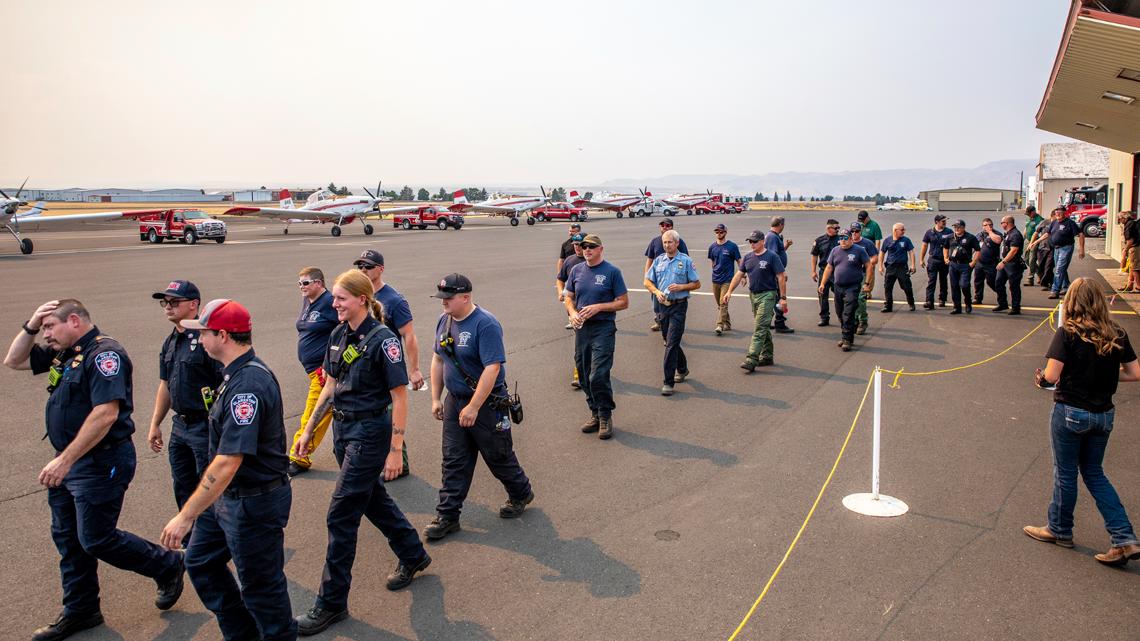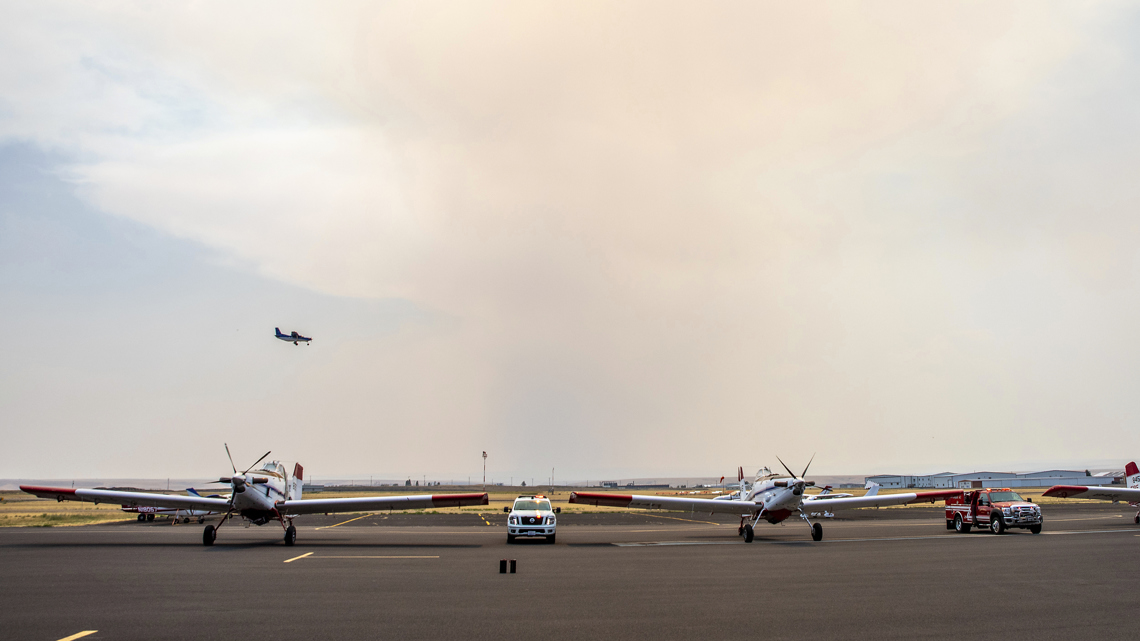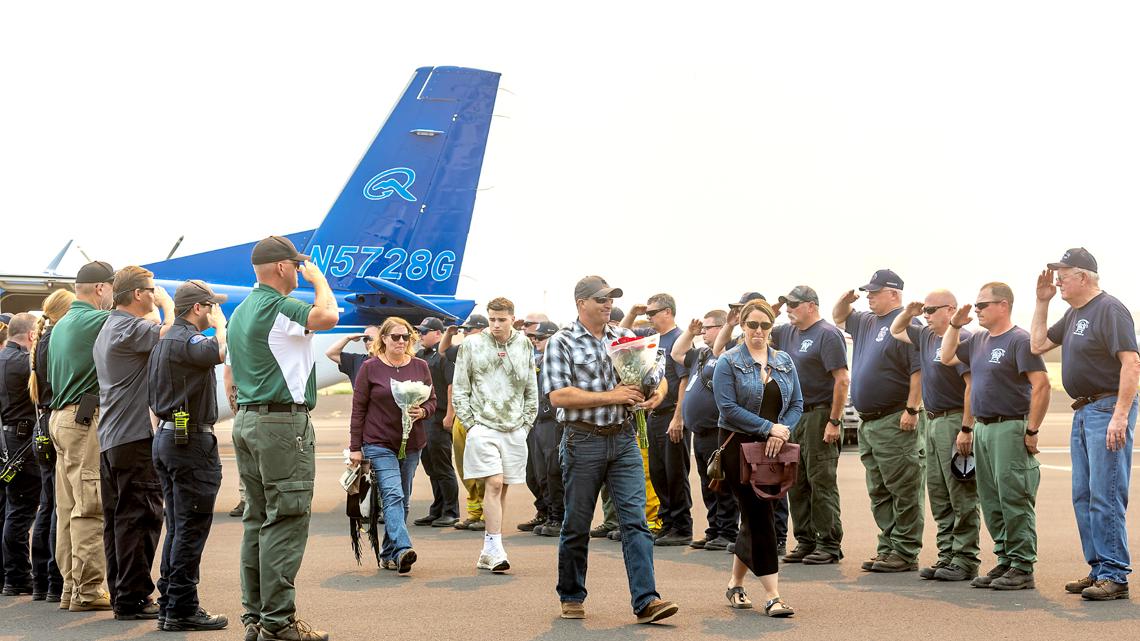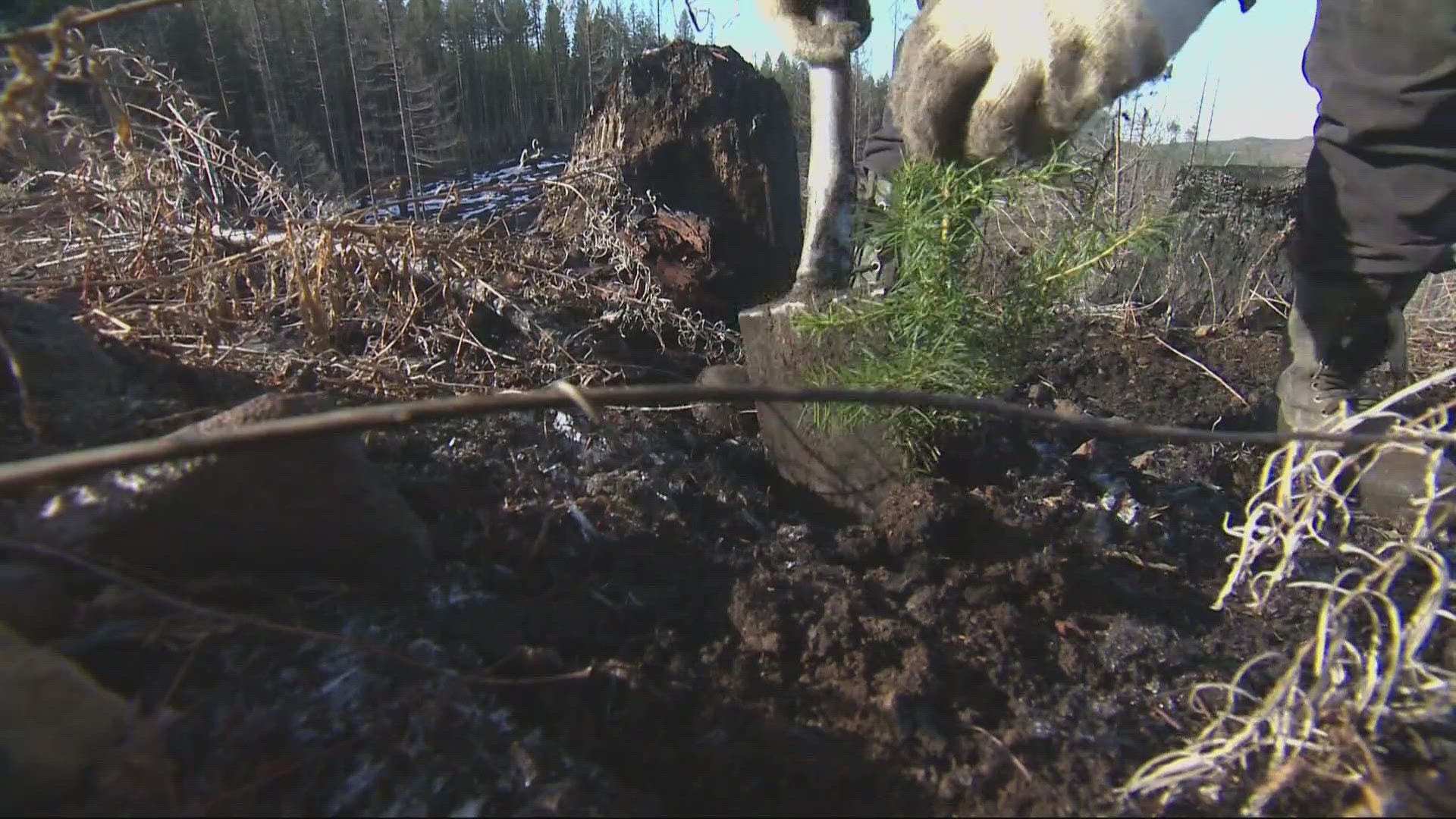HELENA, Mo. — Pilot Jim Maxwell logged nearly 25,000 flight hours over five decades flying small planes in dangerous situations, from spraying to kill illegal drug crops in Central America to navigating smoky skies to drop fire retardant as wildfires scorch the Western United States.
Once in the 1980s, his plane went down when his engine failed during a drug eradication mission and he suffered burns that left him scarred, but he never wavered in his desire to keep flying high-risk missions even as he advanced beyond retirement age.
The 73-year-old from Clarkston, Washington, answered the call again last month to help firefighters contain a lightning-caused blaze in Malheur National Forest in Oregon. It turned out to be his last mission: He was killed when his plane crashed in steep, forested terrain on July 25.
It’s not yet known what caused the crash — it usually takes about two weeks for the National Transportation Safety Board to issue a preliminary report — but fellow pilots believe poor visibility was a factor.
Maxwell’s age would have precluded him from flying for a commercial airline, those pilots must retire at 65, but there are no age limits for firefighting pilots. With unmatchable experience and savvy, it is not uncommon for these aerial firefighters to keep working into their 60s and 70s. Some even fly after turning 80, said Ken Pimlott, former chief of the California Board of Forestry and Protection, or Cal Fire.


Andy Taylor, the 60-year-old owner of New Frontier Aviation in Montana, said he prefers the pilots he hires to have as much experience as possible. Newer pilots start by spraying pesticide to get practice flying at low altitudes and dropping loads, Taylor said, but they also need experience flying in mountainous terrain.
Agricultural spraying usually happens when the air is cool, the ground is flat and there is no wind.
“But switching over to the fire side of it, most of the time we’re flying when it’s 80 to 100 degrees (26 to 37 Celsius) out with the wind blowing in very steep, difficult terrain,” in addition to the smoke.
The job the pilots do is in huge demand during wildfire season and on-scene fire commanders sometimes express desperation for air support when blazes are raging.
It's also expensive: The main federal agencies that oversee firefighting efforts in the West — the U.S. Forest Service and Bureau of Land Management’s parent agency, the Interior Department — spent more than $700 million on aerial firefighting contracts in 2023, according to agency officials.
Being an aerial firefighter requires years of training and experience, and it’s a tough line of work to get into, so pilots and fire officials say it’s not surprising they continue working after most people are retired, as long as they can pass an annual physical that includes an electrocardiogram to test heart function. They also must maintain a commercial pilot’s license and participate in training.
Taylor estimates there are about 120 single engine air tanker, or SEAT, pilots working in the U.S. this summer.


Paul Yedinak, who is 73 like his longtime friend Maxwell, flies a SEAT, mostly in the Pacific Northwest. He estimates the average age of aerial firefighters, including tanker pilots, is about 60 because of the experience required, and because they love flying.
Yedinak, Taylor and Maxwell's son, Jason Maxwell, also an aerial firefighter, believe low visibility due to heavy smoke contributed to the crash, which shook the tight-knit aerial firefighting family.
"Jim was the last person we would ever thought that would have a problem like this, ever," Yedinak said.
Oregon Gov. Tina Kotek ordered state flags to be flown at half staff on July 31 and Aug. 1 to honor Maxwell. His ashes were flown to Lewiston, Idaho, on Aug. 2, where where about 200 people gathered at the airport, Jason Maxwell said.
“My dad deserved something like that," he said.
A memorial service will be held after the fire season is over.
Maxwell was flying an Air Tractor 802A, which enables pilots to drop about 700 gallons (2,650 liters) of retardant on fires from heights as low as 100 feet (30 meters) above the ground, or 60 feet (18 meters) above the highest trees. SEATs are typically used in initial attacks on small fires, but also can be used to fill in areas between retardant drops made by larger tankers.
“We can normally get into tighter places and terrain that the bigger airplanes can't get to,” Taylor said.
SEATs also can land and refill at smaller airstrips closer to fires, rather than at the tanker bases required for larger planes, giving them quicker turn-around times.


A similar aircraft, an Air Tractor 802F, crashed on July 10, killing pilot Juliana Turchetti, 45, as she scooped up reservoir water to drop on the Horse Gulch Fire near Helena, Montana, officials said.
Maxwell got his private pilot’s license when he was 19 and in the 1980s worked for the federal government spraying herbicide to kill opium poppies and marijuana in Guatemala. He was shot at multiple times and his plane caught fire after crashing due to engine failure on one flight, Jason Maxwell said.
Maxwell was badly burned, requiring numerous skin grafts, Yedinak said.
Jim Maxwell and Yedinak had worked for the same BLM contractor for about seven years. They were fighting different fires on the day of Maxwell's fatal crash, in conditions where the visibility was about 3 miles (5 kilometers), compared to 10 miles (16 kilometers) on clear days, Yedinak said.
After the crash, Yedinak and other pilots decided that without at least 5 miles (8 kilometers) of visibility, “we're not going. There's no sense in it.”
The crash “brought us back to reality as far as all we're doing is trying to keep grass and trees from burning,” he said.
Still, Yedinak said he isn't quite ready to retire from firefighting. He keeps in shape by riding his bike, running, hiking and hunting.
“I still enjoy doing it. It's still very challenging," he said. “As long as I can stay fit and I enjoy the job, I'll probably continue for a little while longer."



